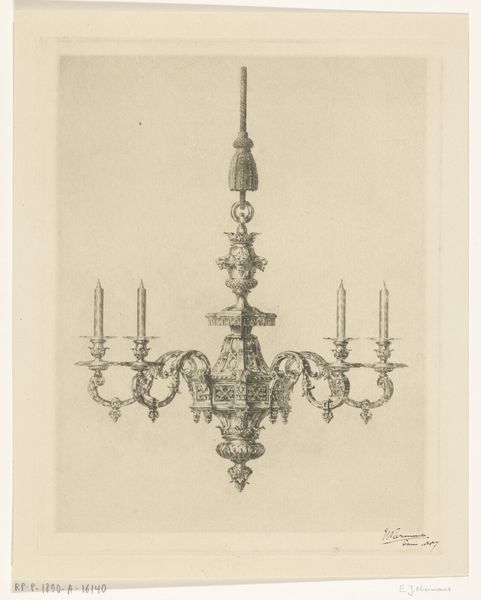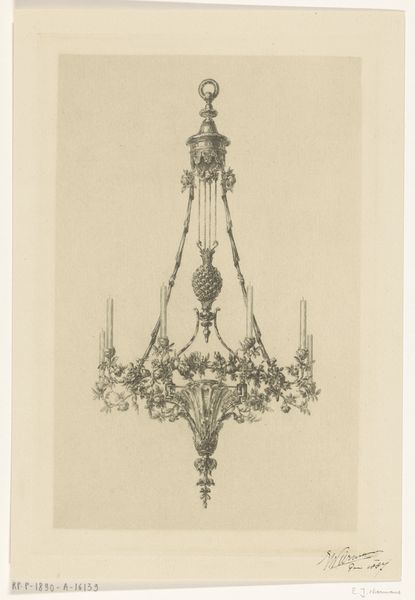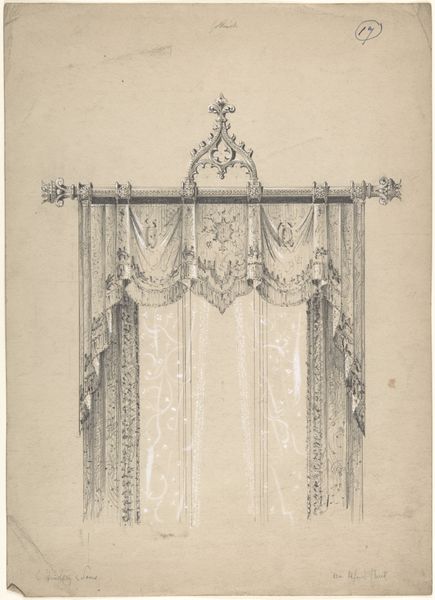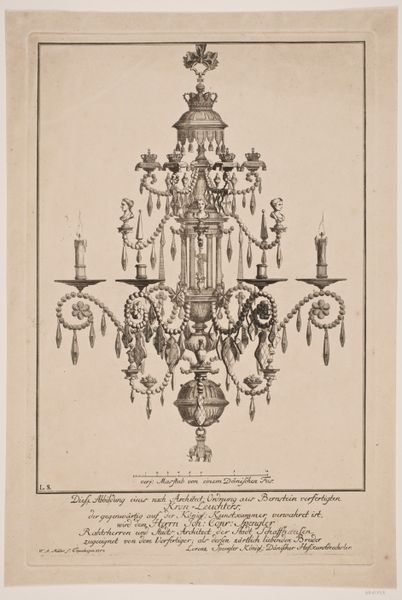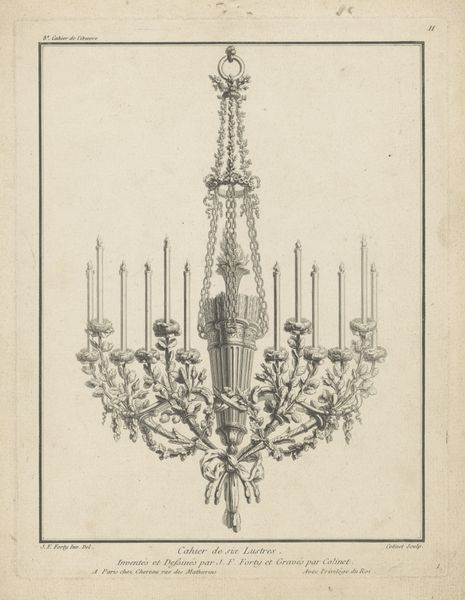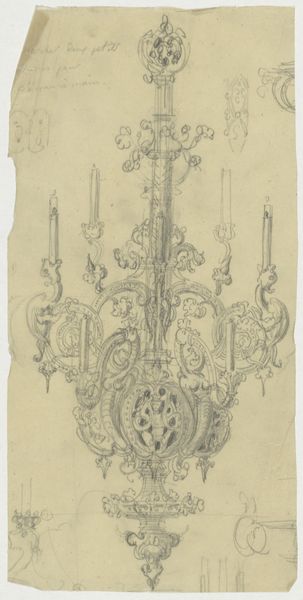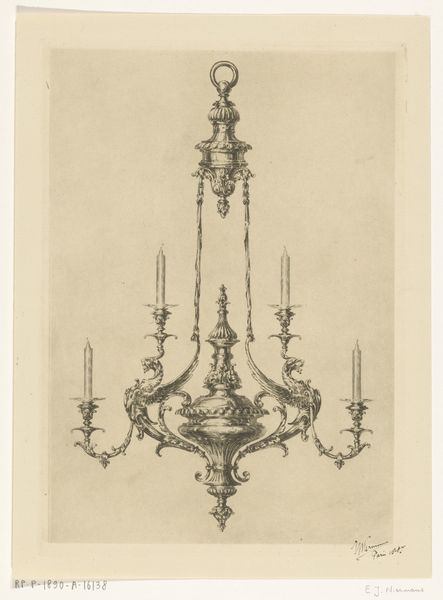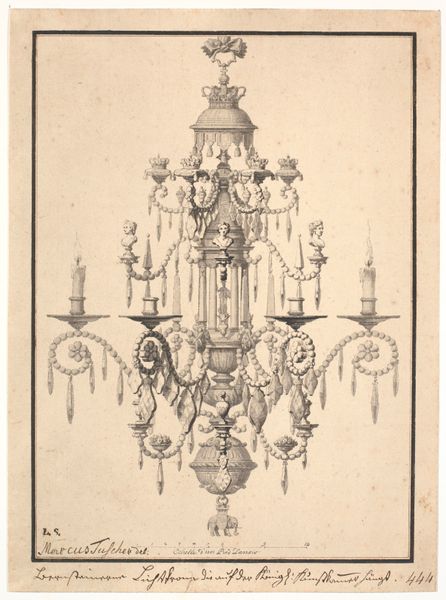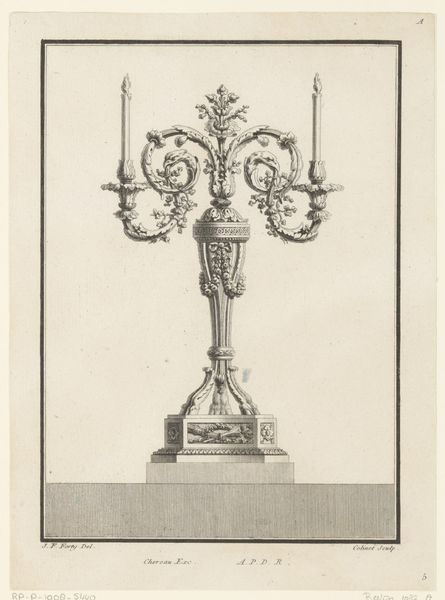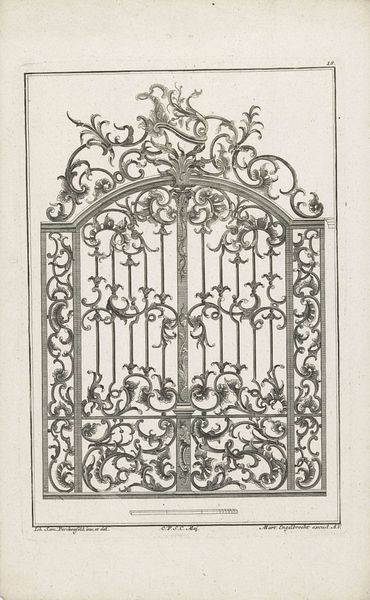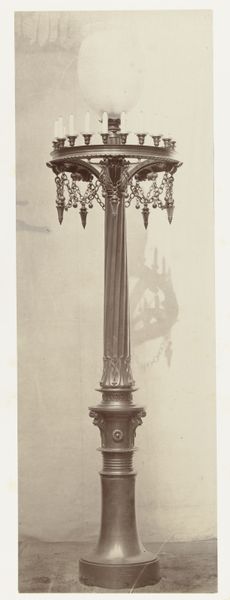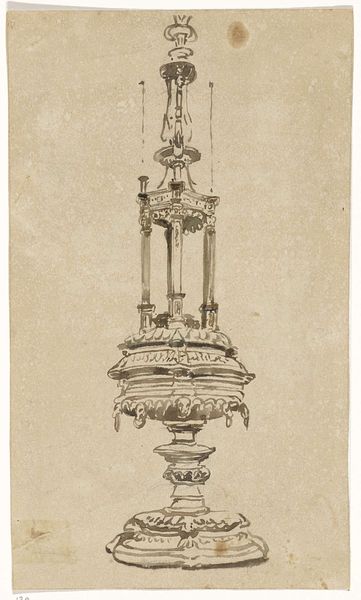
print, metal, photography, sculpture
#
medieval
# print
#
metal
#
form
#
photography
#
sculpture
#
line
#
decorative-art
Dimensions: height 238 mm, width 166 mm, height 262 mm, width 180 mm
Copyright: Rijks Museum: Open Domain
Editor: This wrought iron chandelier for Easter candles, dating from 1869-1887, is simply stunning. It feels simultaneously delicate and imposing. All those floral flourishes against the strong geometric framework of the metal—it's a striking contrast. What do you see in this piece beyond just its aesthetic appeal? Curator: I see a complex dialogue between tradition and modernity, and a reflection on the shifting role of religion in society. Think about the late 19th century – a time of rapid industrialization and social change. This chandelier, with its medieval-inspired design, represents a deliberate reaching back to an imagined past, a yearning for the perceived stability and spiritual certainty of that era. Editor: So, the maker isn't necessarily creating something brand new, but instead referencing something older? Curator: Exactly. Consider the context: the rise of nationalism, the search for cultural identity, and the debates about faith versus science. This chandelier can be viewed as a material manifestation of those anxieties and aspirations. The wrought iron, while traditional, also speaks to the industrial capacity of the time. The craftsmanship becomes a statement. Editor: That’s interesting. I was only thinking about it in terms of its visual appearance. How does it fit within larger historical and political movements? Curator: Consider how this chandelier functions as a symbol. For whom? And against what perceived threats? Whose values were being reasserted through the creation and display of such an object? Was this a means of social cohesion, or did it also serve to exclude? The decorative art reminds me that even seemingly benign objects carry powerful social meaning. Editor: It makes you wonder, doesn't it? I definitely look at this chandelier differently now. Thanks! Curator: And I now have a renewed interest in this fusion of historical aesthetics. Thank you for your insights.
Comments
No comments
Be the first to comment and join the conversation on the ultimate creative platform.
